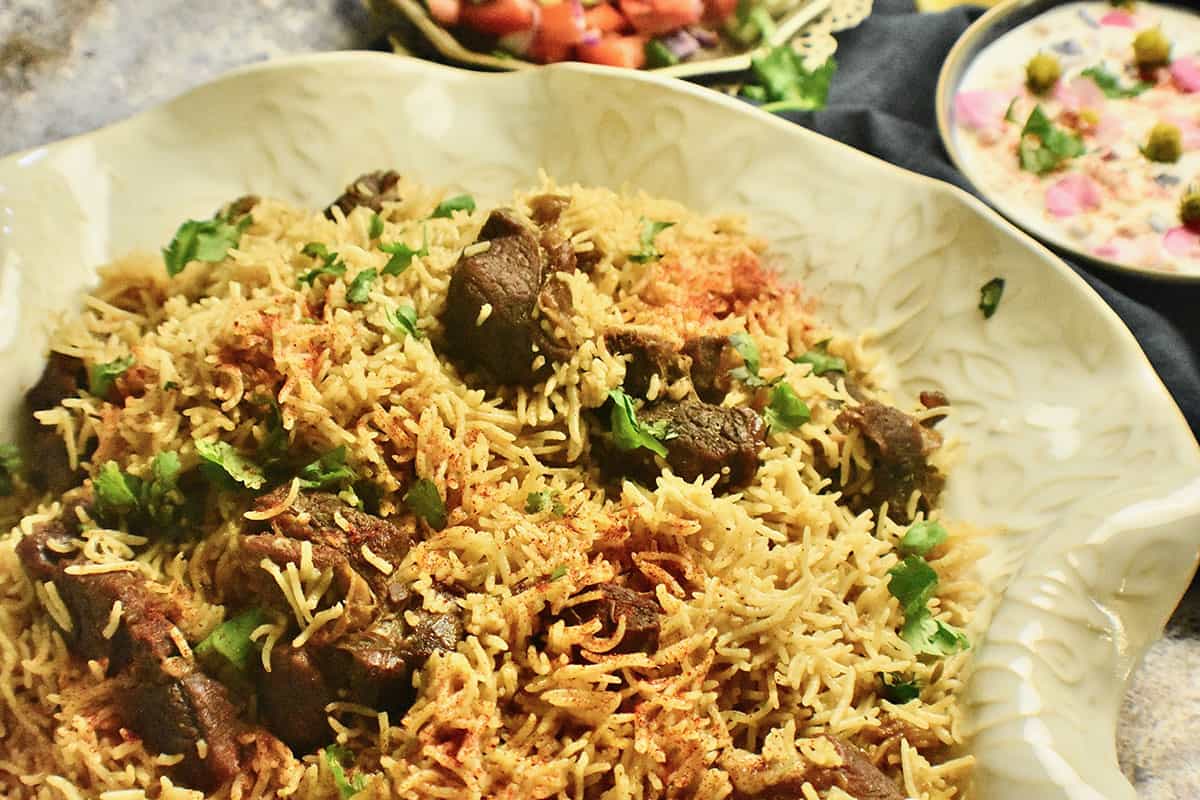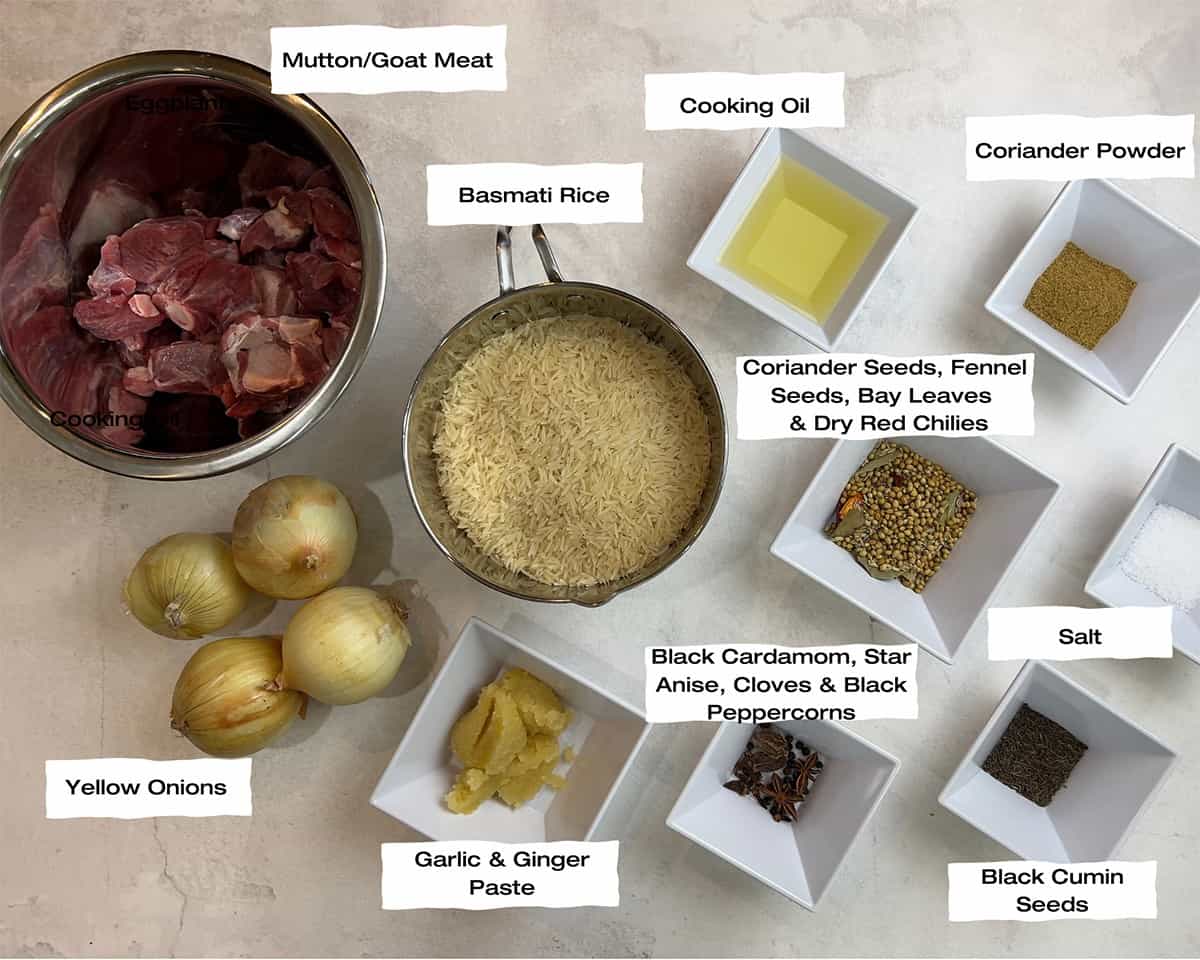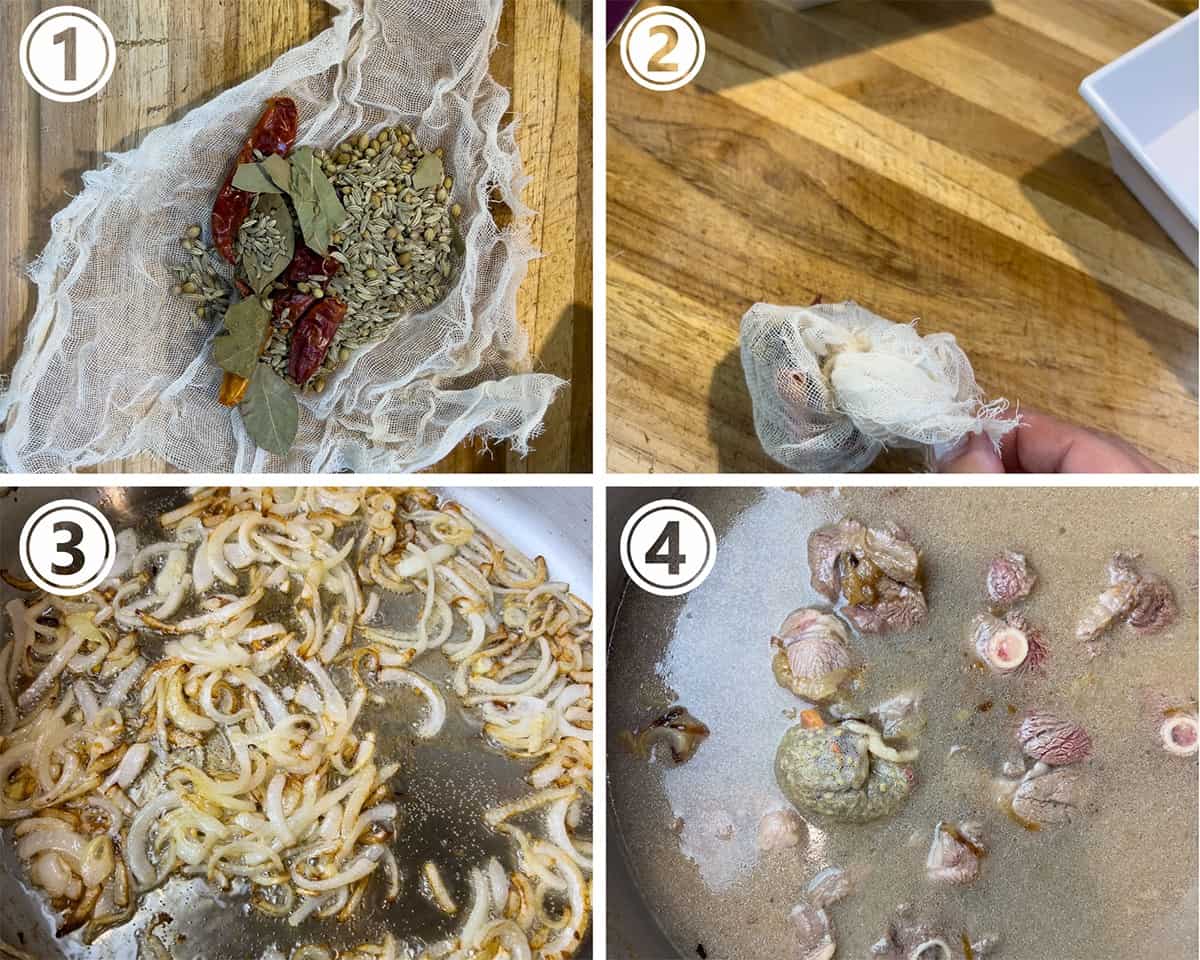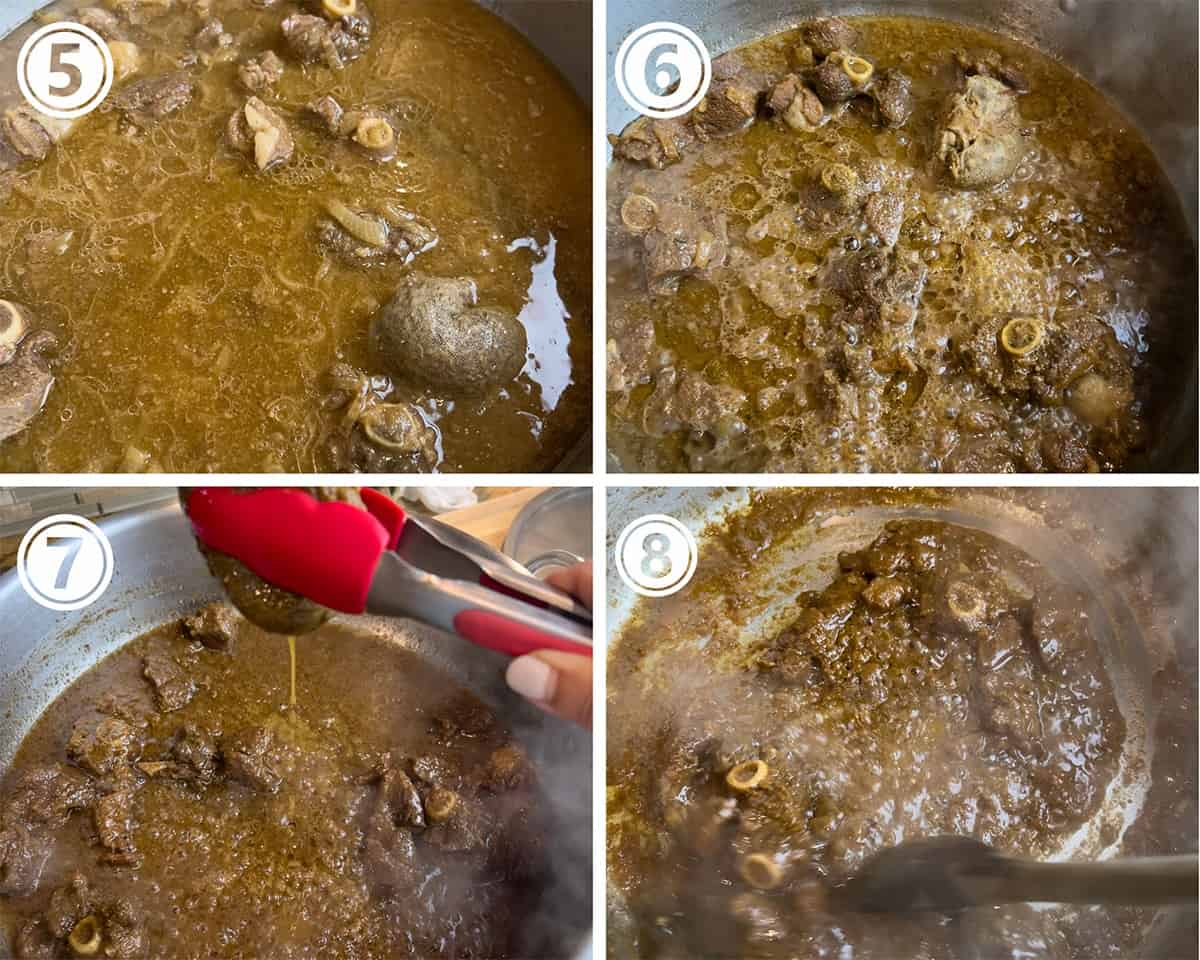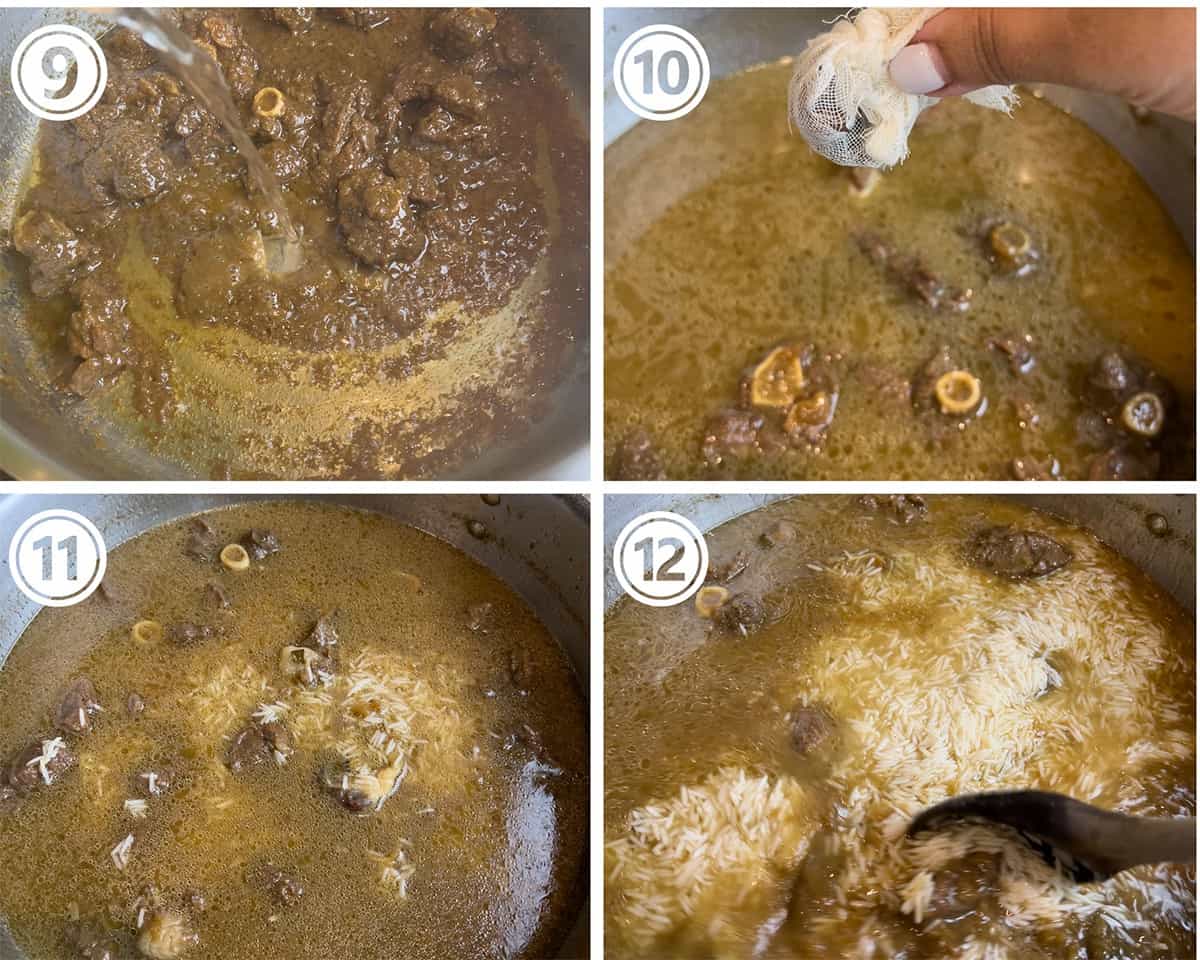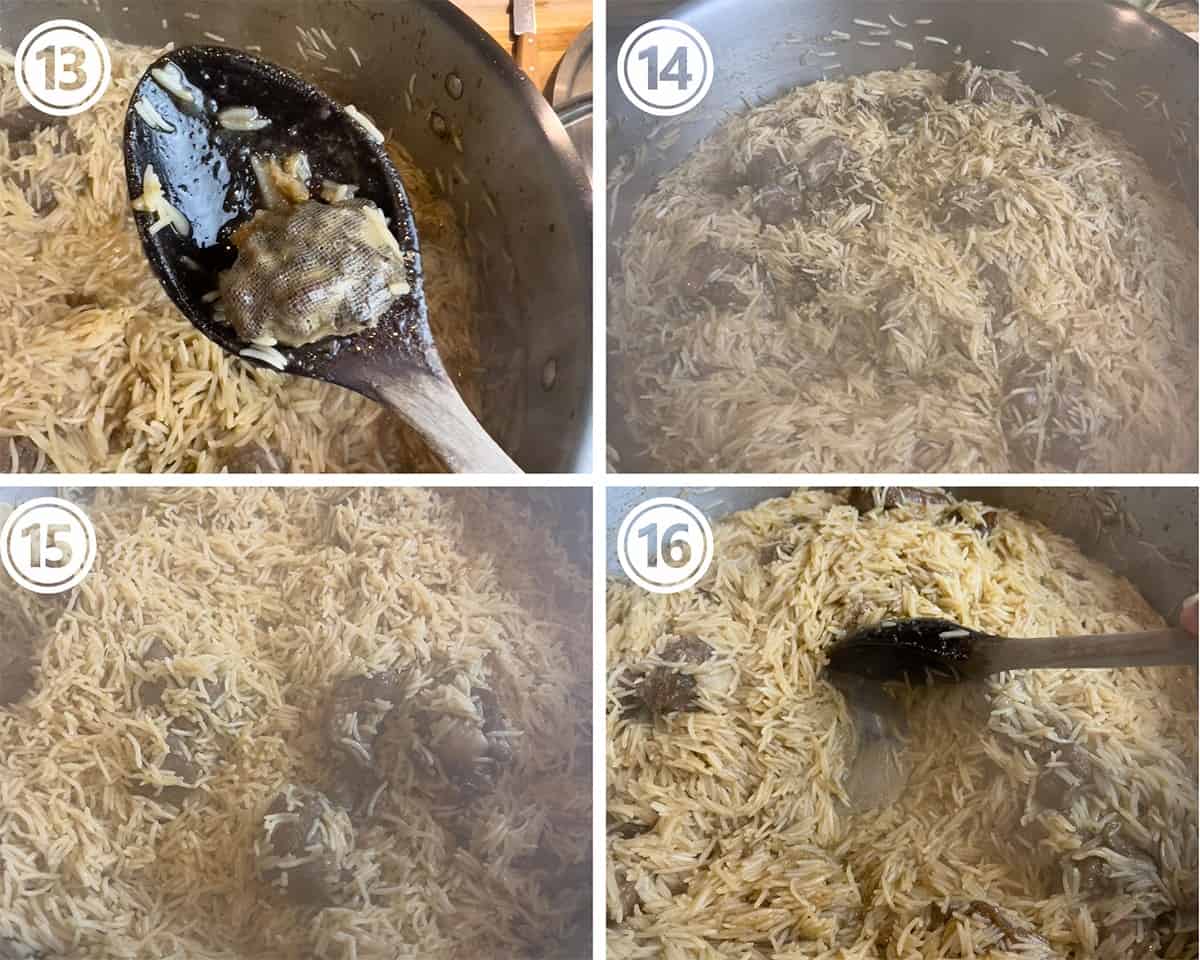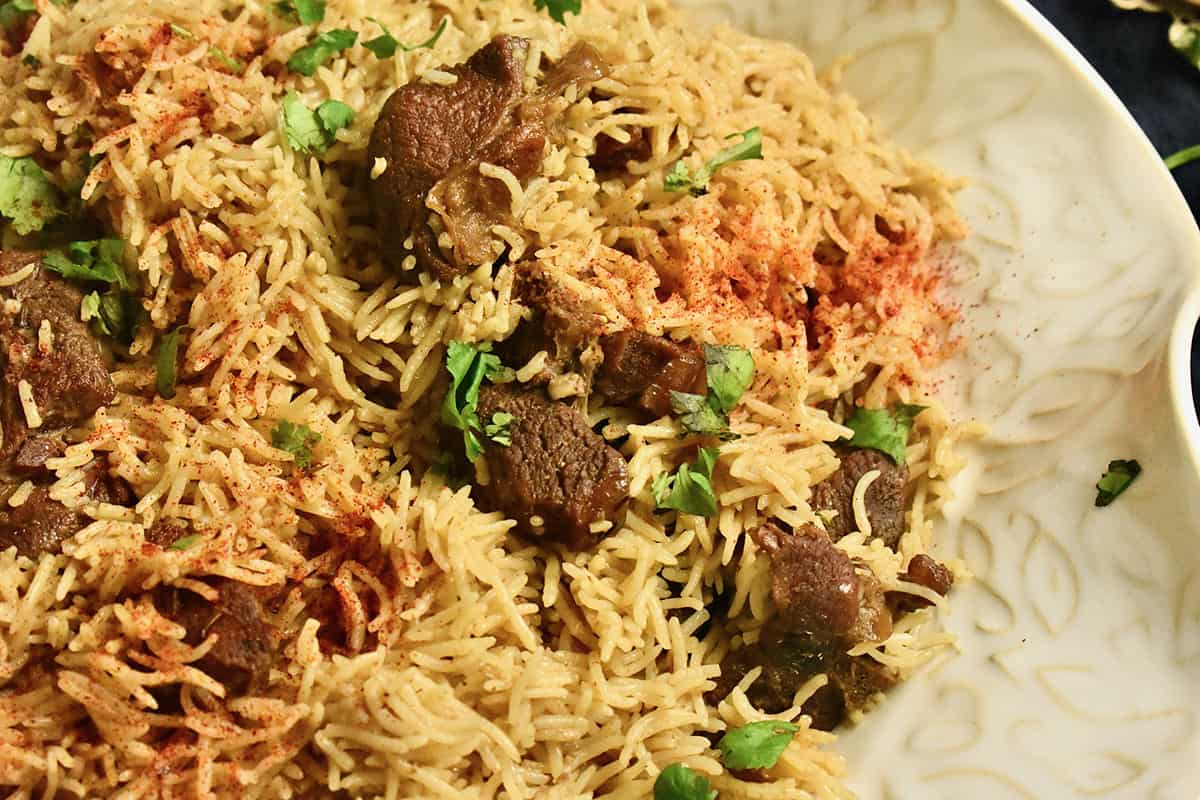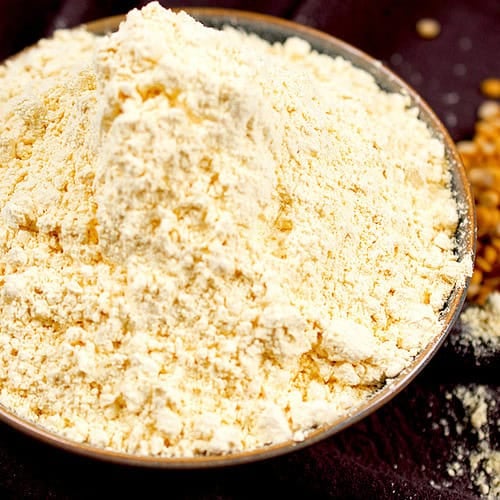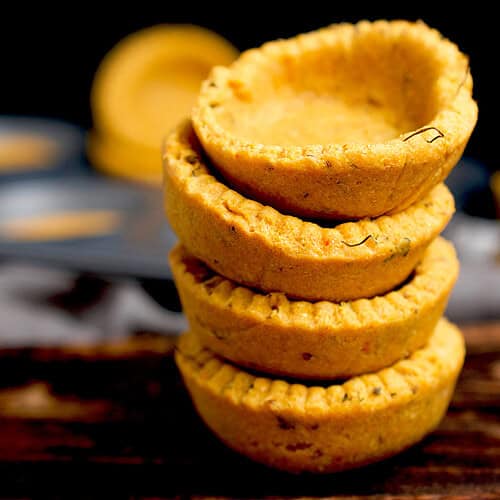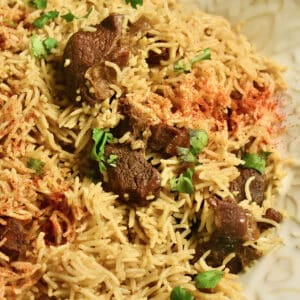Yakhni Pulao is often enjoyed with shami kabab (meat and lentil patties), raita (a yogurt dip), and kachumber (a pico de gallo style salad) followed by a zarda recipe for dessert. Yakhni Pulao is a unique meal. Often served as a luxurious main on a special occasion, it’s also comfort food at its best. It’s something you prepare for the family’s Sunday lunch and also the meal you want to come home to after a long vacation. For many Pakistanis, it’s also what we feed toddlers and young children. A nutritious meal that isn’t spicy, it was a childhood favorite for all three of my kids!
Why you’ll love this recipe
Perfect use of spices - This mutton yakhni pulao is aromatic and has an intense flavor with zero heat. Everyone always falls in love with it at first bite due to its unique taste. One-pot recipe - This one-pot rice pilaf recipe may not use an authentic technique but delivers an authentic taste with much less effort. This is how I have made my pulao for the past 20 years, making prepping, cooking, and cleaning up much easier. Great to serve a large crowd - It’s so easy to double, triple, or even quadruple this yakhni pulao recipe. It’s a perfect stand-alone main dish with a simple cilantro-mint-chutney or green coconut chutney and an easy seasonal salad.
Ingredient notes
Meat - I use meat from the leg portion of the goat for my yakhni pulao. It’s bone-in, lean, and very succulent. The shoulder portion is another good option, but I personally find it too fatty. Make sure always to use fresh meat for best results. Rice - Aged basmati rice is the best option for an aromatic pulao. It has a lower water content, so each grain stays completely separate and releases a delicious nutty aroma once cooked. Cooking oil - I always alternate between canola oil and avocado oil for my cooking. For recipes that require a larger quantity of oil, Canola is the more affordable option, and if I need a small quantity, then avocado oil is my go-to. Spices for the stock - All the flavor in a yakhni pulao comes from the mix of aromatic whole spices. I chose to add in my spices at different stages. Woody coriander, sweet fennel, floral bay leaves, and smoky dry red chilies infuse the stock as it cooks. This blend ensures that there is no gamey smell from the mutton in your final dish. Spices for the Rice - The second group of aromatic spices is more intense. Black cardamom pods, star anise, cloves, and black peppercorns are all added in whole and add a second layer of delicious aroma directly to the rice pilaf. Black cumin seeds - Black cumin seeds have a potent smoky aroma that I always associate with yakhni pulao. As the last thing added to the rice pilaf, this is the first thing you smell when you uncover that pot.
Please see the recipe card at the bottom of this post for the complete list of ingredients with measurements plus recipe instructions.
Substitutions & variations
Use different meat - Try a chicken or beef yakhni pulao for a change. I make the chicken version often. It takes half the time and is a nice change occasionally. A beef rice pilaf will take longer, and the meat will be a little tougher than mutton or chicken, but it’s a good option if you’re not a fan of goat meat. Make it vegetarian - Try my Kabuli Pulao or my raisin and pine nut pulao for a delicious vegetarian version of this pulao. Top with fried onions - Try a popular variation of mutton pulao and top your plated mutton yakhni pulao with crispy fried onions known as birista. Try Ghee - Try cooking the rice pilaf with Ghee, or use ½ ghee and ½ cooking oil. Add tomatoes - Try a variation of this mutton recipe with tomatoes. Simply add two diced tomatoes to the meat when you saute it after the stock is ready. Add yogurt - My recipe doesn’t have yogurt, but you can try adding 1 cup to your pilaf for a Kashmiri yakhni pulao version. Add it in, like the tomatoes mentioned above, when you’re sauteeing the meat for the last time before adding in the water and rice.
Step-by-step instructions
Preparing the stock
Step 1 - Prepare a bouquet garni (bundle of herbs, spices, and aromatics) of coriander seeds, white cumin seeds, fennel seeds, bay leaves, and dry red chilies using a small piece of muslin cloth. Step 2 - Add this to the mutton yakhni (stock) to add flavor and once the mutton broth is ready, remove and discard it. Step 3 - Heat the oil in a cooking pot and add the sliced onions to it. Once golden brown, add the ginger and garlic paste and saute just enough to allow them to bloom. Add the mutton, saute until it turns brown, and then add about 8 cups of water. Step 4 - Add the spice bag and two teaspoons of salt and bring the meat stock to a boil. Once you have a rolling boil, reduce the heat, cover, and let the yakhni simmer on a low flame for one hour before uncovering.
Roasting the mutton
Step 5 - After the hour is over, uncover and cook the yakhni on high heat to reduce it. Step 6 - By the time you turn the heat up, the mutton pieces should be about 75% cooked.
Step 7 - Cook on high till you have about 2 cups of mutton stock left over. Remove the spice sachet and squeeze it using a pair of tongs. This helps to extract all the flavor from the spices. Step 8 - Once you have 1 cup of water left, add the coriander powder and adjust the salt as needed (the mixture must be uncomfortably salty at this point). Start to saute the mutton, a process called bhuna in South Asian Cuisine.
Cooking the rice
Step 9 - This constant stirring helps to roast the meat in the oil and also helps mash the cooked-down onions, so you have a puree-like consistency. Once you have a homogenized mixture that has separated from the oil, your base for the yakhni pulao is done. Step 10 - The mutton should be 90% cooked by now and fall apart when pressed with the back of your cooking spoon. Add the required amount of water, based on how much meat and rice you have, along with the second bouquet garni with black cardamom, cloves, star anise, and whole peppercorn. Step 11 - Drain the pre-washed and soaked fragrant basmati and add it to this stock. Check for salt once more and turn the heat to high. Step 12 - Stir the rice just once and then wait for it to absorb all of the stock.
Finishing the rice -
Step 13 - Pull out the spice bundle, squeeze, and discard once the rice has absorbed most of the liquid. Step 14 - As the rice cooks, tear some sheets of foil so that you can immediately cover the pot and trap all the steam. Step 15 -Once you can no longer see any liquid at the bottom of the pot, sprinkle the black cumin seeds and cover the top with foil to seal tightly. Place the lid on top and turn the flame on low to steam cook the rice to a finish. Step 16 - After 15-20 minutes, remove the lid and gently peel away one corner of the foil to check if the yakhni pulao is ready by tasting a grain of rice. Once you’re sure the pilaf is ready to serve, uncover the entire pot and gently fluff the rice. Always use a wooden spoon (never use utensils with sharp edges as this will break the beautiful long grains of rice).
Expert Tips
For more Pakistani recipes like this, check out 20 popular Pakistani recipes. If you decide to try this recipe, Please don’t forget to leave a rating and comment below! If you take a picture then tag me on Instagram! Thank You!
